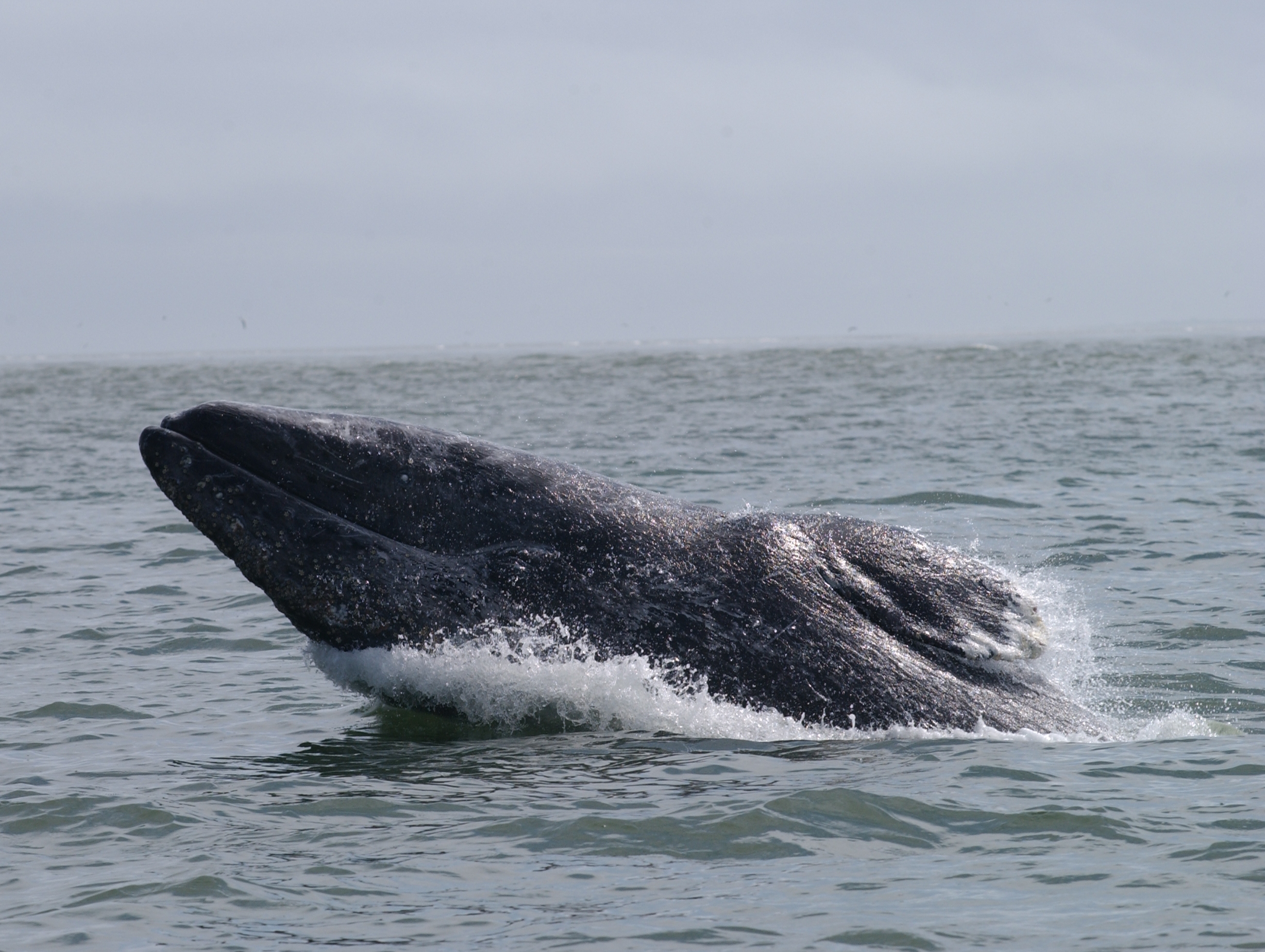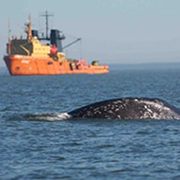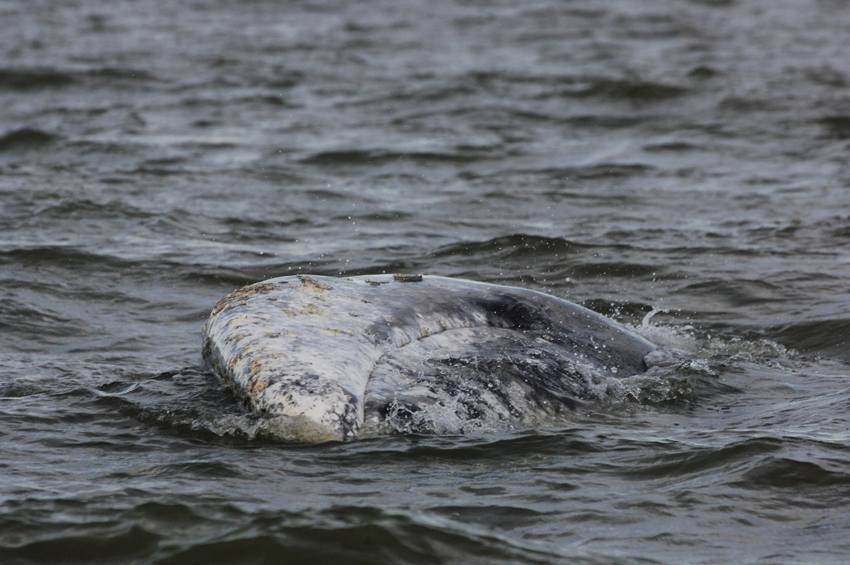Following Flex - the western gray whale
Meet Flex. Flex belongs to the highly threatened population of western gray whales. He has been tagged by satellite and tracked by scientists in the hope to discover the migration routes of the species and ways to better protect it from threats such as accidental entanglement in fishing gear, underwater noise and exposure to spilled oil.
The western gray whale is listed as Critically Endangered on the IUCN Red List of Threatened Species™. In 2010, its estimated population size was about 136 whales, including only around 30 mature females. Western gray whales fast during the winter, migrate in the spring, and feast throughout the summer and autumn in the waters off Sakhalin Island in eastern Russia, before migrating again to their wintering areas. Little is known about the whales’ breeding grounds or migration routes, which makes it difficult to develop appropriate conservation measures beyond the Sakhalin Island region.
In October 2010, a team of scientists from Russia and the United States, with IUCN’s scientific and logistical support, tagged a 13-year old male western gray whale using satellite telemetry. The researchers nicknamed it Flex and have since tracked its every move.
Flex is the first western gray whale to be tagged and tracked using telemetry.
“Tremendous care was taken to select a healthy adult male,” says Greg Donovan, Head of Science for the International Whaling Commission (IWC), based in Cambridge, who coordinated the project. “Although the risks associated with such tagging are minimal, we wanted to take absolutely no chances with females or young animals. The information we expect to get from this study is vital to international conservation efforts to preserve this population, as is the collaboration between governments, international organizations, international scientists, industry and other stakeholders.”
Flex was successfully tracked for over four months, revealing his long - and unexpected - migration route.
Western gray whales are believed to migrate south in winter, towards Japan, Korea or China. But to everyone’s surprise, Flex moved across the Okhotsk Sea to the west coast of Kamchatka, then followed the coast around the southern tip of Kamchatka and up along the east coast to the Commander Islands, across the Bering Sea towards Alaska, through the Aleutian Island chain and across the Gulf of Alaska.
At the beginning of February 2011, Flex arrived at the US west coast off Washington State. The last information that was received about his location was off Siletz Bay on 4 February 2011, when the tag presumably came off. Since leaving the Kamchatka Peninsula, he travelled more than 8,500 kilometers over 124 days, with an average speed of 6.6 km per hour.
This information, together with the photographic data of Flex gathered in previous years, provides the first evidence that links the Sakhalin feeding ground of western gray whales to locations in the eastern North Pacific.
"However interesting Flex’s movements are, it is important not to lose sight of the overarching aim of these satellite taggings,“ says Finn Larsen, coordinator of the Western Gray Whale Conservation Initiative at IUCN. “We know from a number of entanglements in Japanese fishing gear in the last 10 years that western gray whales still migrate along the coasts of Japan, and it is still very important to identify the migratory destinations in Japan, Korea or China of these western gray whales.”
Scientists are now analyzing the gathered to better understand the movements of western gray whales. They are also planning to tag twelve other western gray whales in August and September 2011.
This tagging project represents a major international collaboration between the International Whaling Commission, IUCN, the A.N. Severtsov Institute of Ecology and Evolution of the Russian Academy of Sciences, the Oregon State University and the University of Washington. Funding in 2010 was provided by Exxon Neftegas Ltd. and Sakhalin Energy Investment Company.
For more information, please contact:
Finn Larsen, Marine Programme Officer, IUCN Global Marine and Polar Programme e-mail: Finn.Larsen@iucn.org
Beatrice Riche, Logistics and Communications Officer, IUCN Global Marine and Polar Programme e-mail: Beatrice.Riche@iucn.org








